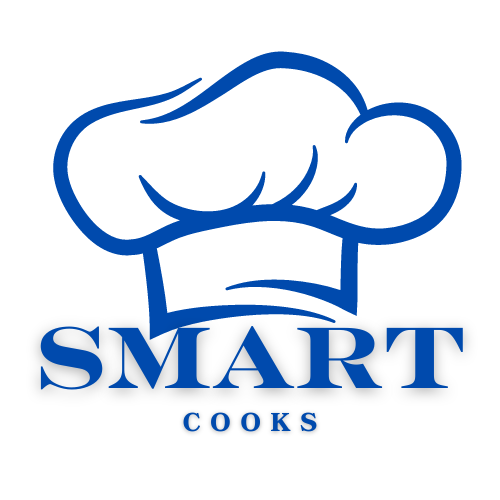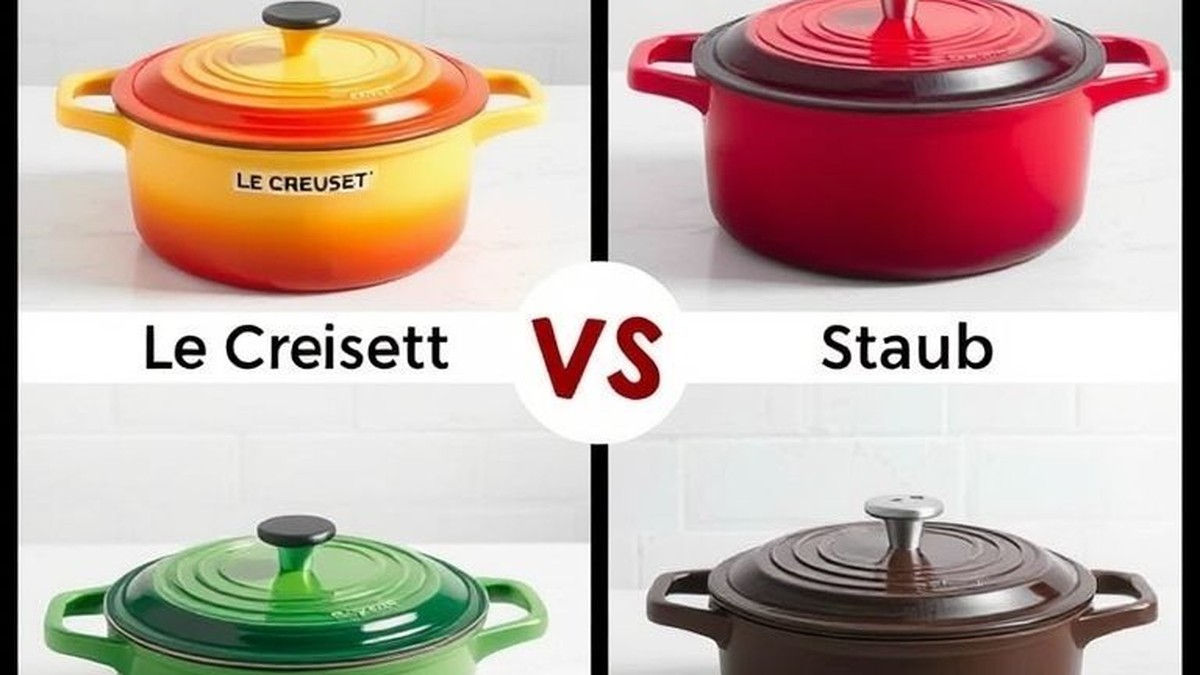Le Creuset vs Staub: Which Dutch Oven is Worth It?
You’re embarking on a culinary journey, perhaps outfitting a new kitchen, or simply upgrading your most treasured cookware. The centerpiece? A versatile, durable Dutch oven. Your research inevitably leads to two titans of the enameled cast iron world: Le Creuset and Staub. Both promise exceptional performance and longevity, but their subtle differences cater to distinct cooking styles and aesthetic preferences. How do you choose between the classic charm of Le Creuset and the robust functionality of Staub? Let’s delve deep to help you decide which Dutch oven is truly worth it for your kitchen.
Detailed Specification Comparison
| Feature | Le Creuset | Staub |
|---|---|---|
| Material | Enameled cast iron | Enameled cast iron |
| Heat Distribution & Retention | Superior heat distribution and retention | Exceptional heat retention and distribution |
| Seasoning Required | No, ready to use | No, requires no seasoning |
| Durability | Resists dulling, staining, chipping and cracking | Robust enamel finish (no specific resistance claims provided) |
| Interior Enamel | Light colored smooth enamel for easy monitoring | Textured black matte enamel for exceptional browning |
| Self-Basting Lid | Tight-fitting, specially designed to circulate steam and return moisture | Heavy weight, tight-fitting lid retains moisture (no specific self-basting nubs mentioned) |
| Handles | Ergonomic, designed for easy lifting | Robust, integrated cast iron handles (common for Staub, specific ergonomic claim not provided) |
| Knobs | Ergonomic, stainless steel knob safe at any oven temperature | Often nickel-plated or brass (metal knob), oven-safe (specific details for pumpkin not provided) |
| Cooktop Compatibility | Compatible with all cooktops | Smooth enamel bottom works on all stovetops, including induction |
| Oven-Safe Temperature | Up to 500°F | Generally up to 500°F (with metal knob, specific data not provided for pumpkin) |
| Cleaning | Easy-to-clean, dishwasher safe | Easy to clean (not explicitly stated as dishwasher safe, but typical for enameled cast iron) |
| Metal Utensil Safe | Yes | Generally recommended to use wood/silicone to preserve interior (not explicitly stated) |
| Aesthetics | Vibrant, glossy exterior, wide range of colors | Rustic, unique shapes (e.g., pumpkin), burnt orange 3-coat Majolique finish |
| Versatility | Braising, baking, roasting, frying, simmering, serving | Ideal for slow cooking, searing, braising, roasting, serving |
| Weight (approx. for 5-6qt) | Moderate (approx. 11-13 lbs) | Heavy (approx. 12-15 lbs) |
| Price (typical range) | Premium ($300-$450) | Premium ($250-$400) |
| Warranty | Limited Lifetime Warranty | Limited Lifetime Warranty |
| Check Price for Le Creuset | Check Price for Staub which dutch oven is worth it |
Design & Build Quality
Both Le Creuset and Staub are renowned for their exceptional craftsmanship. Le Creuset often strikes a balance between functionality and a vibrant, elegant aesthetic. Its signature glossy exterior enamel, available in a rainbow of colors, makes it a kitchen showpiece. The feel is smooth, polished, and inviting. The stainless steel knob and ergonomic handles reflect thoughtful design for comfort and durability. Anecdote: When Amelia unboxed her new Le Creuset, the ‘Flame’ orange gleamed under the kitchen lights. She ran her hand over its smooth, chip-resistant surface, admiring the gentle curve of the handles. It felt substantial, yet graceful, instantly elevating her kitchen’s ambiance.
Staub, on the other hand, often presents a more rustic, robust, and utilitarian design. While also enameled, its finish, like the burnt orange Majolique on the pumpkin cocotte, tends to be deeper and sometimes textured, giving it a unique character. The construction feels incredibly sturdy, built for hard work. Staub’s integrated cast iron handles and heavier lids contribute to its weighty, professional feel. Anecdote: David’s Staub pumpkin cocotte felt like a weighty heirloom. The deep, almost iridescent burnt orange of its Majolique finish exuded a timeless, hearty appeal. He appreciated its solid, no-nonsense build – a pot designed to perform serious culinary magic.
Performance & Features
When it comes to performance, both brands excel in heat retention and distribution, a hallmark of quality enameled cast iron. Le Creuset’s light-colored interior enamel is a favorite among many for its ability to show the progression of browning and allow easy monitoring of fond development without guesswork. Its lid design is specifically engineered to circulate steam, effectively self-basting food for maximum moisture. Anecdote: Chef Julian, preparing a delicate chicken fricassee, appreciated the Le Creuset’s light interior. He could perfectly monitor the browning of his chicken pieces and easily see the fond building. The tight-fitting lid kept the sauce moist and rich, the steam condensing and dripping back down, ensuring every bite was tender.
Staub distinguishes itself with its textured black matte interior. This finish is renowned for promoting exceptional browning and developing deep, rich flavors, similar to traditional seasoned cast iron but without the maintenance. It’s particularly favored for searing and caramelizing. The heavy, tight-fitting lid is highly effective at trapping moisture, creating a self-contained, humid cooking environment. Anecdote: For his signature short ribs, Mark reached for his Staub. The black matte interior worked wonders, giving the ribs an incredible sear and deep mahogany color. He simmered them for hours, and the heavy lid ensured every drop of moisture stayed in the pot, resulting in fall-off-the-bone tenderness and an intensely flavored sauce.
Ease of Use
Le Creuset scores high marks for ease of use. The smooth, light-colored interior is notoriously easy to clean, often requiring just a quick wipe down. It’s also dishwasher safe and safe for use with metal utensils, adding to its convenience. The ergonomic handles and stainless steel knob are designed for comfortable handling and oven safety at any temperature. Its relative lighter weight (compared to Staub) can also make it easier to maneuver. Anecdote: After a successful batch of sourdough baked in her Le Creuset, Sophia simply soaked it briefly. The bread had left minimal residue, and the smooth enamel wiped clean effortlessly. She loved that she didn’t have to baby it with plastic utensils, and even after a long bake, the knob was cool enough to handle with just a cloth.
Staub’s black matte interior, while excellent for browning, can make it slightly harder to gauge fond development for new users, as it camouflages the colors more than a light interior. However, its non-stick properties after a few uses and no seasoning requirement are definite advantages. While generally easy to clean, some might find the textured surface slightly more demanding than Le Creuset’s smooth interior. Its heavier build, while contributing to its stability and heat retention, can also make it more challenging to lift, especially when full. Anecdote: John, always a fan of low-maintenance cookware, loved that his Staub required no seasoning. After a hearty cassoulet, the cleanup was surprisingly quick despite the dark interior. He did notice its substantial weight when lifting it from the oven, a testament to its solid cast iron construction, but also a factor to consider for those with weaker grip.
Verdict: Which Dutch Oven is Worth It?
Both Le Creuset and Staub represent top-tier investments in enameled cast iron, offering exceptional durability and performance. The “worth it” truly boils down to your personal cooking style, aesthetic preferences, and priorities:
- Choose Le Creuset if: You prioritize aesthetic appeal with a wide range of colors, value a light interior for easy monitoring of cooking progress and easier cleanup, appreciate ergonomic design for lighter lifting, and seek maximum versatility for everything from delicate sauces to baking. It’s excellent for those who want a visual indicator of browning and don’t mind a slightly higher price point.
- Choose Staub if: You are a serious cook who prioritizes exceptional searing and browning capabilities, prefer a rustic and robust aesthetic, value a heavier pot for stability and superior moisture retention, and appreciate the low-maintenance black matte interior that mimics seasoned cast iron. It’s ideal for braises, stews, and deep-flavored dishes where intense browning is key.
Ultimately, neither is objectively “better” than the other; they are simply different interpretations of the perfect Dutch oven. Whichever you choose, you’ll be investing in a piece of cookware that will likely last a lifetime and inspire countless culinary creations.

I am a passionate recipe developer and food enthusiast specializing in heart-warming traditional dishes and simple, everyday meals. My goal is to inspire you to find joy and confidence in the kitchen through my easy-to-follow recipes.
